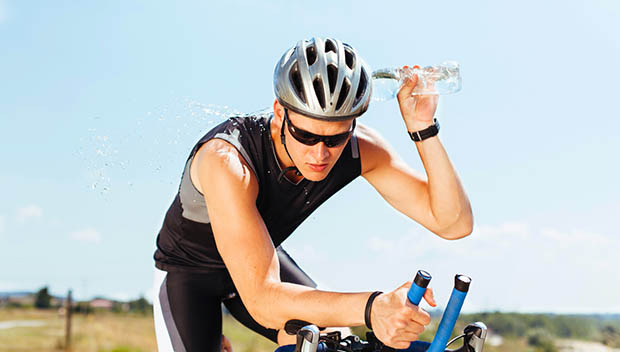
For rookie triathletes, nutrition could very well be considered the fourth leg of the race.
If you're preparing for your first triathlon, it's invaluable to practice taking in the proper amount of fluid and calories to keep you moving. It's not always eating too little, either--one of the biggest mistakes rookies make is actually eating too much. They stuff their stomachs with gels and Gatorade and, assuming their first race is a sprint or Olympic-distance event, they often don't need it all.
Participating in a triathlon doesn't mean you need to suck down a gel every 20 minutes. In fact, you shouldn't. That's far too much sugar for anyone to handle, especially when you're racing and simultaneously diverting blood to your muscles. The result is a rotted gut, and a potentially early end to what should be one of the most exciting days of your life.
Nutrition is highly individualized. It depends on your weight, sweat rate and fitness level. Keeping that in mind, here are some simple guidelines to help get you through the finish line.
MORE: How Data Can Help You Hydrate and Fuel on Race Day
Breakfast
Have a simple breakfast no less than two hours before the start of the race. Think complex carbohydrates and go easy on the caffeine. Start drinking water, and continue to hydrate at a normal rate--don't overdo it—leading up to the race.
Light Snack
Roughly 30 minutes before the start of the race, have a light snack like a banana or an energy bar. Make sure you're still drinking water, but also consider adding some low-calorie electrolytes such as Nuun, Skratch Labs or GU Brew.
In-Race Hydration
Once the race begins, drink by thirst. Take a big swig when you finish the swim leg and get out of the water, and drink again roughly every 15 to 20 minutes while racing. If you're racing in heated temperatures, drink more often.
Before race day, practice grabbing your bottle out of the cage, drinking from it, and then sliding it back in without weaving across the road. The key is to brace your core, keep your handlebars straight, and pedal forward.
Be sure to keep enough fluid on your bike to get you through the course. If necessary, pull over at an aid station (far to the right and out of the way of other riders) and refill your bottle.
MORE: 5 Ways to Speed Recovery After Racing
In-Race Fueling
For shorter distances, you likely won't need to eat during the race, as long as you're taking in enough water and electrolytes. If you feel you need to eat, however, then do it while on the bike. Gels (make sure to take in some water with them) and bananas are great options if your stomach can tolerate them.
If you're eating on the run, you may find that your stomach doesn't like taking in solid food. These are all things you'll want to practice before race day so you can find out how your body will respond.
Recovery
Within 30 minutes of finishing the race, have some protein and a little snack to help repair your body. Continue to hydrate, and reward yourself with a hearty meal once you feel you're ready for it.
 READ THIS NEXT: 5 Race-Day Hydration Tips for Triathletes
READ THIS NEXT: 5 Race-Day Hydration Tips for Triathletes


